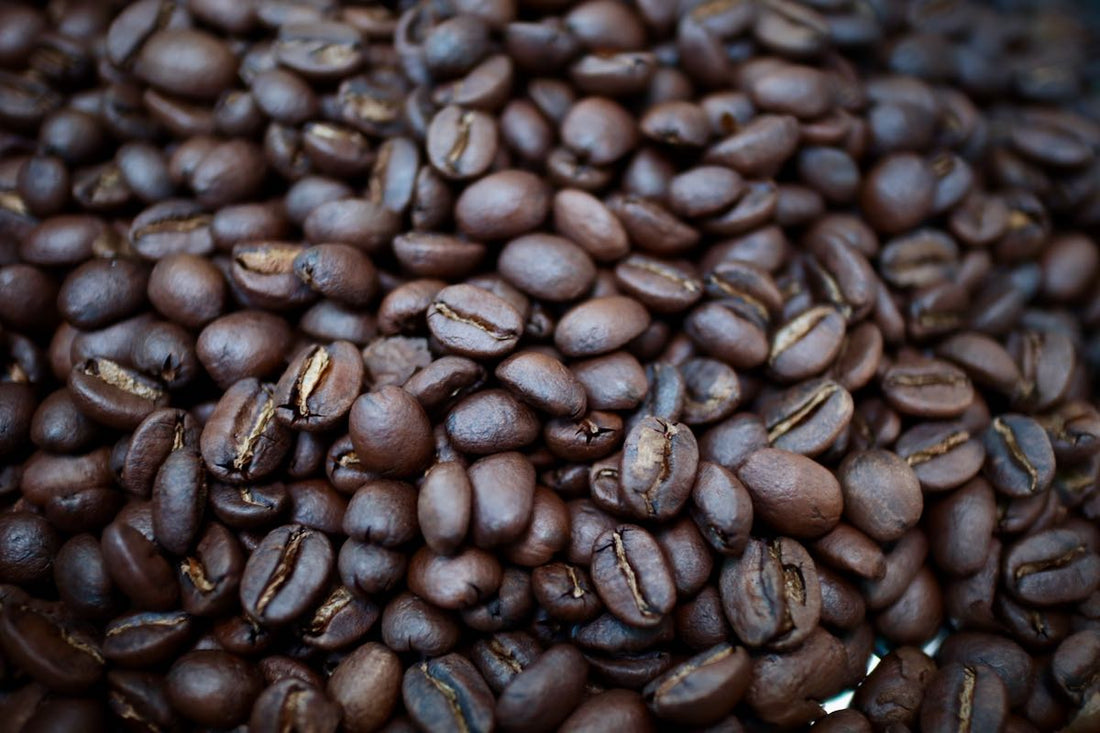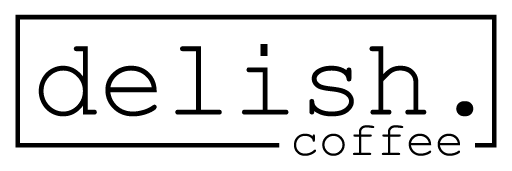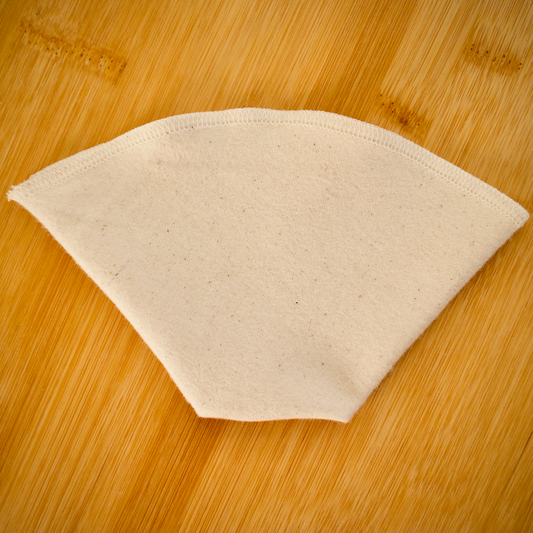
Coffee Roast Levels
Coffee roast levels have a huge impact on the flavor, strength, and ultimately how much we enjoy our coffee.
In this guide we'll speak in detail about the 4 most common roast levels:
- Light Roast
- Medium Roast
- Medium-Dark
- Dark
Within these though, there can be futher refinement.
We'll briefly speak to a few of these refinements, specifically in the Dark Roast category.
These are commonly called French Roast, Italian Roast, and Espresso Roast.
What this Guide Will Give You
The goal of this article is to arm you with as much understanding as possible of coffee roast levels so that you can broaden your love of coffee and coffee roasting.
With that, for each of the coffee roast levels, we'll cover 4 main points.
- Temperature: This refers to the range of temperatures that are most commonly associated with the roast level.
- Characteristics: We'll briefly share Bean color, coffee flavor, aroma, and common names.
- Grean Beans: Recommended Green Coffee beans for each roast level.
- Common Beans: For comparison, we'll share a couple popular brands for each roast level.
My hope is that this is the most complete and useful guide to coffee roast levels you've found on the web.
But enough talk, let's start with the lightest and make our way to the darkest coffees.
Light Roast Level
For many of us, light roasts haven't been a common experience for us. But this is where the original characteristics of the coffee bean live.
As such as its origin and varietal, are more pronounced in light roasts.
Temperature:
Typically roasted to around 350°F to 400°F (196°C to 204°C). This roast level is acheived by dropping the roast anywhere from the start to the end of first crack.
Characteristics:
- Color: Pale brown, dry surface.
- Flavor: High acidity, light body, and subtle fruity or floral notes.
- Aroma: Bright and zesty with hints of fruit and floral scents.
- Common Names: Cinnamon roast, New England roast.
Green Beans that are great for light roasting
- Ethiopian Yirgacheffe: Known for its bright acidity and floral, citrusy notes.
- Kenyan AA: Offers a vibrant acidity with fruity and wine-like flavors.
- link to coffee bean corral
Popular Light Roasting Brands:
- Blue Bottle Coffee: Known for their Three Africas blend, offering a bright and fruity light roast.
- Stumptown Coffee Roasters: Their Ethiopia Duromina is a delightful light roast with floral and citrus notes.
- link to amazon
Wanna try something special? Our Dawn Patrol Coffee- is a great entry point for light roast coffees.
Medium Roast Level
For most of us, medium roasts open the window to what we most commonly think when it comes to our coffee.
Often well-rounded and approachable, and nutty and chocolaty undertones tend to create crowd pleasing brews.
Temperature:
Usually dropped at about 410°F to 430°F (210°C to 221°C). It's taken a bit further into the first crack but not too close to the second crack.
Characteristics:
- Color: Medium brown, balanced between acidity and body.
- Flavor: Moderate acidity and body, with nutty and chocolatey notes.
- Aroma: Balanced, slightly sweet with nutty undertones.
- Common Names: American roast, City roast.
Green Beans that are great for Medium roasting
- Colombian Supremo: A well-balanced coffee with a mild acidity and nutty undertones.
- Costa Rican Tarrazu: Known for its bright acidity and honey-like sweetness.
Our Crestline is a top-selling medium roast coffee.
Popular Medium Roasting Brands:
- Peet's Coffee: Their Major Dickason's Blend is a classic medium roast with a well-balanced flavor.
- Dunkin' Donuts: Offers a smooth and mild medium roast coffee.
Medium-Dark Roast Level
While we often refer to them as medium roasts, medium dark roasts are where many begin to think bitterness is too present.
These roasts have a depth of flavors like caramel, roasted nuts and a hint of bitterness that's both satisfying and bold.
Temperature:
Dropped between 435°F to 450°F (224°C to 232°C). It's right around the beginning of the second crack, but not too deep into it.
Characteristics:
- Color: Richer brown, slightly oily surface.
- Flavor: Fuller body, pronounced sweetness, caramelized and roasted nut notes.
- Aroma: Sweet, with hints of caramel and a touch of bitterness.
- Common Names: Full City roast, After Dinner roast.
Green Beans that are great for Medium-Dark roasting
- Guatemalan Antigua: Offers a medium body with caramel and cocoa notes.
- Sumatra Mandheling: Known for its full body and earthy, spicy flavors.
Popular Medium-Dark Roasting Brands:
- Starbucks: The Pike Place Roast is a popular medium-dark roast option with a rich and bold flavor.
- Caribou Coffee: Their Caribou Blend is a medium-dark roast known for its smooth, full-bodied taste.
Dark Roast Level
For those of us that like a strong, bold cup of coffee, these dark roasts are our cup of choice.
Here the original bean characteristics are often masked by the roast levels characteristics.
Temperature:
Dropped between 465°F to 480°F (240°C to 249°C). This roast level extends into the second crack, but it's before the beans become overly oily.
Characteristics:
- Color: Dark brown to almost black, shiny surface due to oils.
- Flavor: Bold and intense, smoky or charred taste, dark chocolate and roasted nut notes.
- Aroma: Strong, often with a roasted, earthy scent.
- Common Names: French roast, Espresso roast.
Popular Dark Roasting Brands:
- Peet's Coffee: Their French Roast is a well-regarded dark roast known for its smoky and intense flavor.
- Death Wish Coffee: Famous for its dark roast, known as the "World's Strongest Coffee."
French Roast
Temperature:
Typically dropped beyond 480°F (249°C). It's quite deep into the second crack, and the beans become very shiny and oily.
Characteristics:
- Color: Very dark, almost black, very shiny due to oils.
- Flavor: Intense and smoky, with a prominent charred flavor.
- Aroma: Heavy and smoky, sometimes described as "burnt."
- Common Names: Italian roast, Spanish roast (when roasted to the maximum).
Italian Roast
For those that love dark and bitter, Italian is your jam.
Often having a strong, bitter note and a slightly charred profile, Italian roasts are one of the darkest roast levels.
Temperature:
Italian Roast: Similar to French Foasts, drop temperatures exceed 480°F (249°C), but it doesn't have a fixed temperature.
Characteristics:
- Characteristics: Similar to espresso roast, very dark and intense.
- Flavor: Extremely bold and robust, often with a strong, bitter note.
- Aroma: Heavily roasted and pungent.
Popular Italian Roasted Brands:
- Lavazza: Lavazza's Crema e Gusto is a popular Italian-style dark roast known for its robust and bold taste.
- Segafredo Zanetti: Offers a range of Italian-style coffee blends, including Segafredo Intermezzo.
Espresso Roast
While this isn't technically a "roast level" it does usually fall in to a dark roast coffee.
But don't let that fool you, just becuase it's espresso, it doesn't mean it's dark.
What is true though is that espresso roasts are tailored for making espresso, so they're intense and rich - which darker roasts tend to create.
Temperature:
It's a bit tricky to pinpoint a specific temperature for espresso roasts are usually a blend of various roast levels. Again, they can be lighter, but usually they tend to be between medium-dark and dark roast blends.
Characteristics:
- Characteristics: Often tailored for a preferred coffee experience.
- Flavor: Intense and rich, syrupy body, often with a bittersweet, dark chocolate taste.
- Aroma: Deep and inviting, with a strong coffee scent.
Popular Espresso Roasted Brands:
- Lavazza: Offers a variety of espresso blends, including Lavazza Super Crema, known for its creamy and mild flavor.
- Illy: Known for their Illy Espresso, offering a balanced and aromatic espresso roast.
Now that we've covered what the various roast levels are. Let's take a look at some common myths about them.
Coffee Roast Level Myths
There are several myths and misconceptions about coffee roasting and roast levels that can sometimes lead to confusion.
Let's address some of these to help you better understand this fascinating world:
Myth 1: Dark Roasts Are Higher in Caffeine.
Reality: This just isn't accurate.
The roasting process doesn't significantly impact caffeine content.
In fact, it has more to do with elevation and the bean itself that indicates caffeine levels.
Myth 2: Dark Roasts Are Bitter, Light Roasts Are Sour.
Reality: While it's true that dark roasts can have bitter notes and light roasts can have more acidity, these flavors are not inherently negative.
Properly roasted and brewed coffee should have a balanced and pleasant taste, regardless of the roast level.
Myth 3: Light Roast Levels Lack Flavor.
Reality: Light roasts can be bursting with flavor!
They often showcase the nuanced and unique characteristics of coffee beans from different regions.
Light roasts can have fruity, floral, and tea-like flavors, making them a favorite among coffee connoisseurs.
But if we're expecting a darked coffee, our expectations might be mis-set.
Myth 4: Dark Roasts Have More Oils.
Reality: While it's true that dark roasted beans may appear oily on the surface due to longer exposure to heat, this doesn't necessarily mean they have more oil content than lighter roasts.
It's more about how the oils are extracted during roasting.
Myth 5: Dark Roasts Are "Stronger."
Reality: The perception of coffee strength is often related to the concentration of coffee solids in your cup, which is influenced by factors like coffee-to-water ratio and brewing time.
Dark roasts may taste bolder or have a heavier body, but it doesn't necessarily mean they have more caffeine or are "stronger" in terms of concentration.
And yes, I realize that above I said Dark roasts are for those that love a strong cup of coffee.
While technically not true, this is how most people speak of strong coffee :)
Myth 6: All Beans Roast the Same.
Reality: Different coffee beans have unique characteristics that can shine at specific roast levels.
Some beans are better suited for light roasts to highlight their bright acidity, while others thrive as dark roasts, emphasizing their bold flavors.
The choice of roast level should match the bean's qualities and origin.
Myth 7: Espresso Beans Are a Special Roast Level.
Reality: Espresso beans are not a unique roast level; they can be light, medium, or dark roasted beans.
What makes them suitable for espresso is the blend's composition and the grind size, which are optimized for espresso machines.
Myth 8: All Dark Roasts Are Alike.
Reality: Dark roasts vary in flavor depending on the beans and the roaster's techniques. French roast from one roaster may taste different from another roaster's version, as factors like bean selection and roast duration play a role.
Now you know what the most common coffee roast levels are, and what there not.
But what about the most important part, which coffee roast you enjoy the most.
Before we wrap up, let's dig into that a little bit.
Your Preferred Coffee Roast Level
Discovering your preferred coffee roast level can be a delightful journey of taste exploration. Here are some tips to help you determine your ideal roast level:
Start with Variety:
Begin by trying different roast levels from light to dark.
This will give you a broad sense of the flavor spectrum and help you identify your preferences.
Single-Origin Exploration:
Experiment with single-origin coffees at various roast levels.
Single-origin beans can showcase unique flavors from their specific regions, allowing you to appreciate the nuances of each roast level.
Try a Coffee Flight:
If available, consider ordering a coffee flight or sampler from a local coffee shop.
This allows you to taste multiple roast levels side by side, making it easier to discern the differences.
Adjust Brewing Methods:
Use a brewing method that highlights the characteristics of each roast level.
For example, try a Chemex or pour-over for light roasts, a French press for medium roasts, and an espresso machine for dark roasts.
Take Notes:
Keep a coffee journal to record your observations.
Note the aroma, flavor, acidity, body, and any specific tasting notes for each roast level.
This can help you track your preferences over time.
Compare and Contrast:
Taste different roast levels one after the other to compare their flavors directly.
This can make the differences more apparent and aid in your decision-making process.
Seek Recommendations:
Ask for recommendations from knowledgeable baristas or coffee enthusiasts. They can suggest specific coffees and roast levels based on your taste preferences.
Experiment Gradually:
Don't rush the process.
Gradually transition from one roast level to another, giving your taste buds time to adjust and appreciate the nuances of each.
Consider Brewing Time:
Keep in mind that the brewing time also affects the flavor.
Light roasts may require shorter extraction times, while dark roasts can handle longer extraction.
Adjust your brewing time accordingly.
Trust Your Palate:
Ultimately, your taste buds are the best guide. Pay attention to what you enjoy the most.
If a certain roast level consistently brings a smile to your face, that's your preferred one!
Be Open to Change:
Your taste preferences may evolve over time. What you enjoy today might be different from what you prefer a year from now.
Embrace the journey of discovering new flavors.
This was very real for me. When I started roasting coffee, I loved medium-dark to dark coffee. roasts.
Today, I far more prefer a delicate light roast.
Above all, remember that coffee tasting is a personal and subjective experience.
And it's supposed to be fun.
There's no right or wrong when it comes to roast level preferences.
The key is to savor the process and enjoy the diverse world of coffee flavors as you find your perfect cup.
Happy Drinking!



